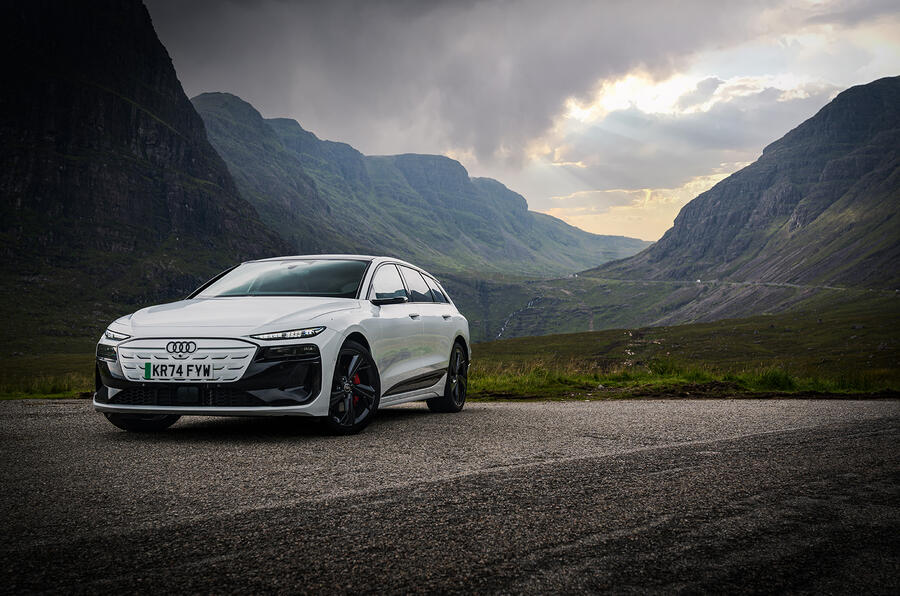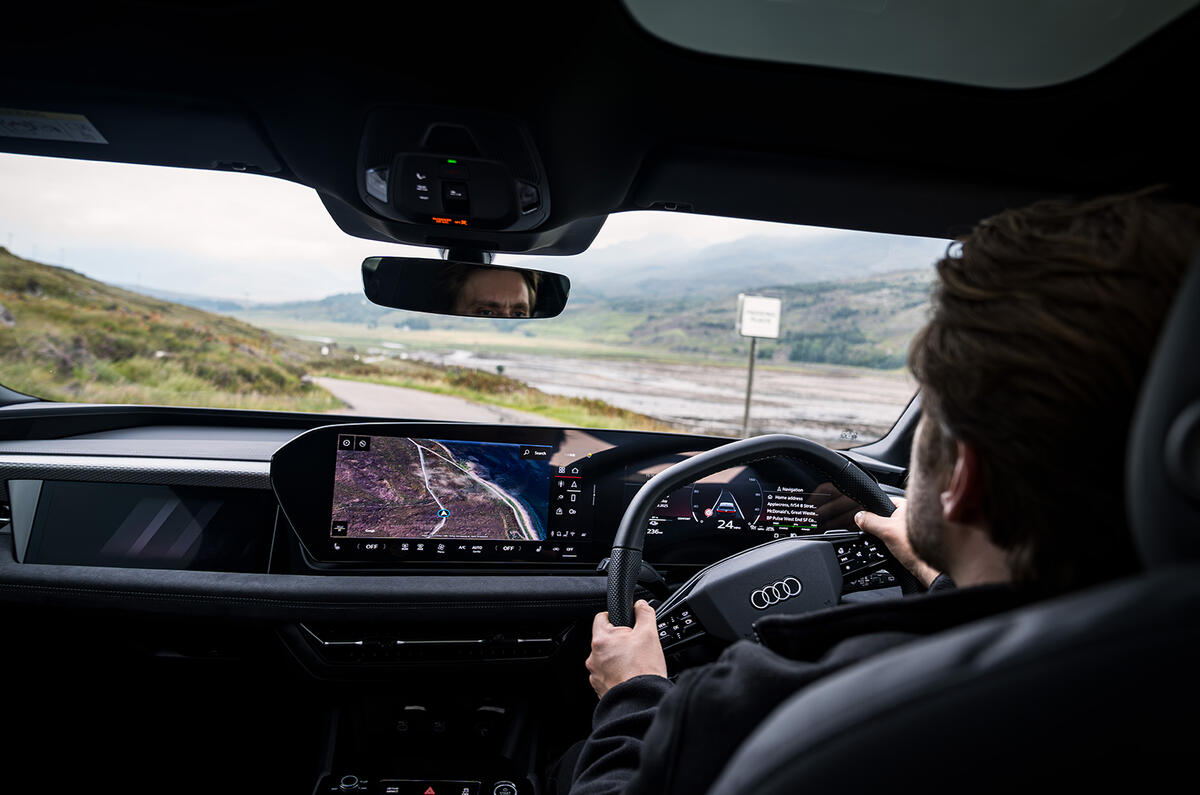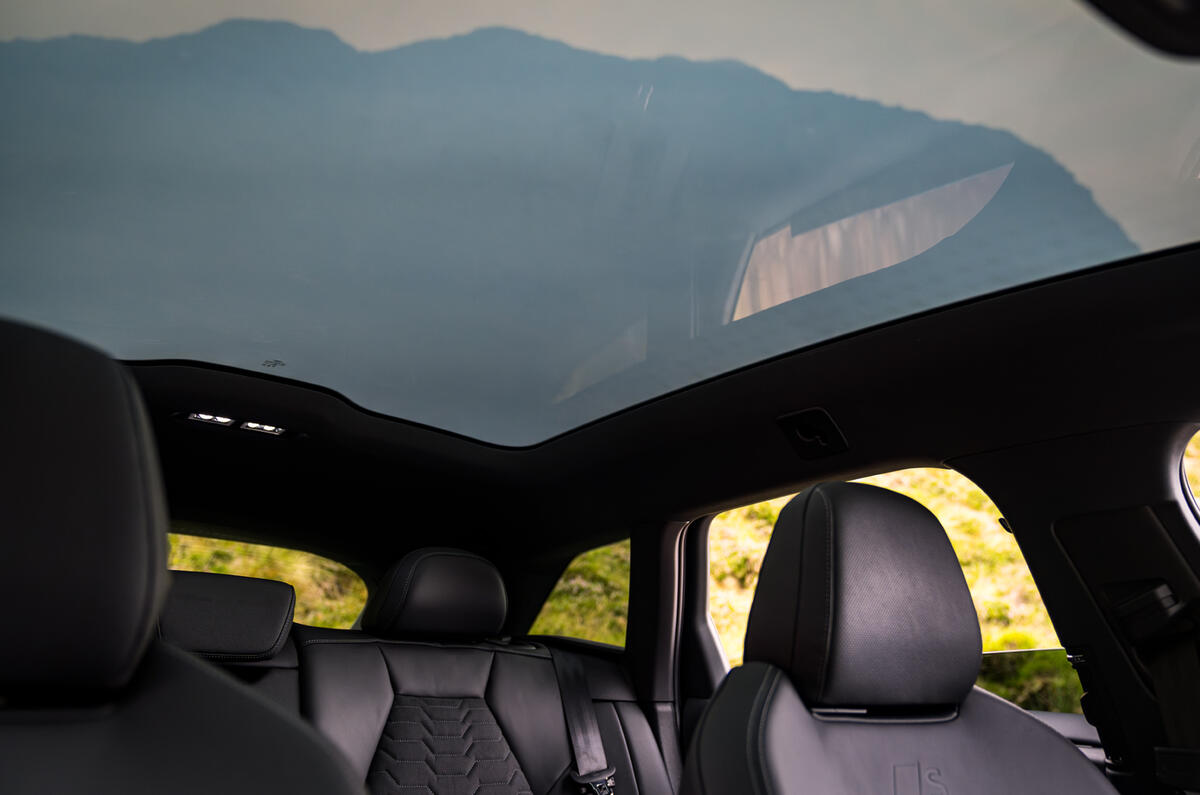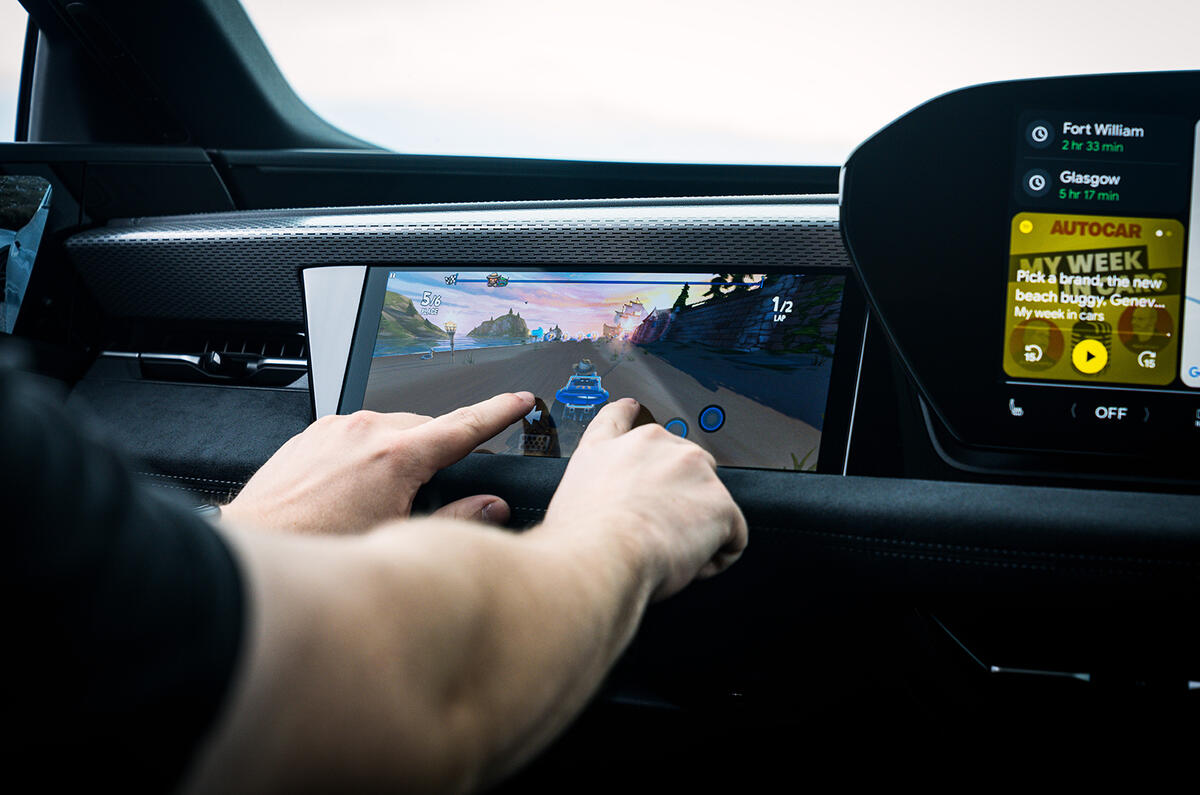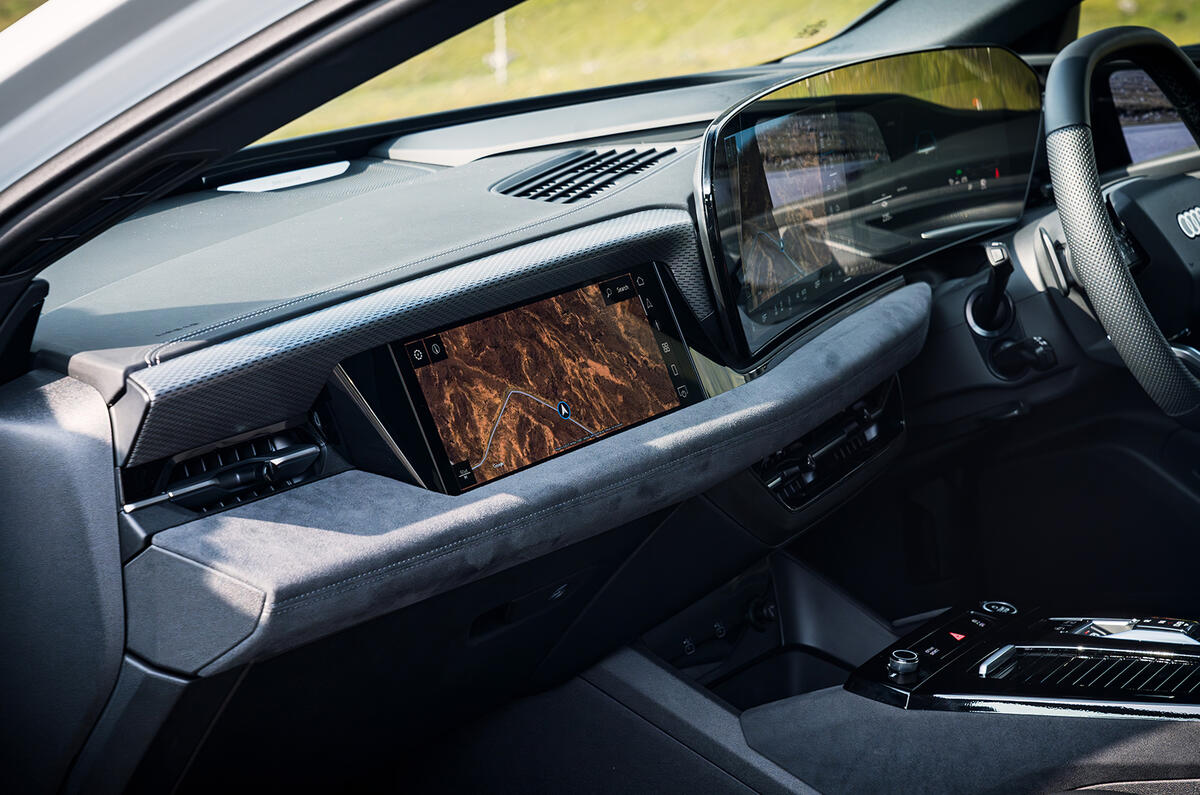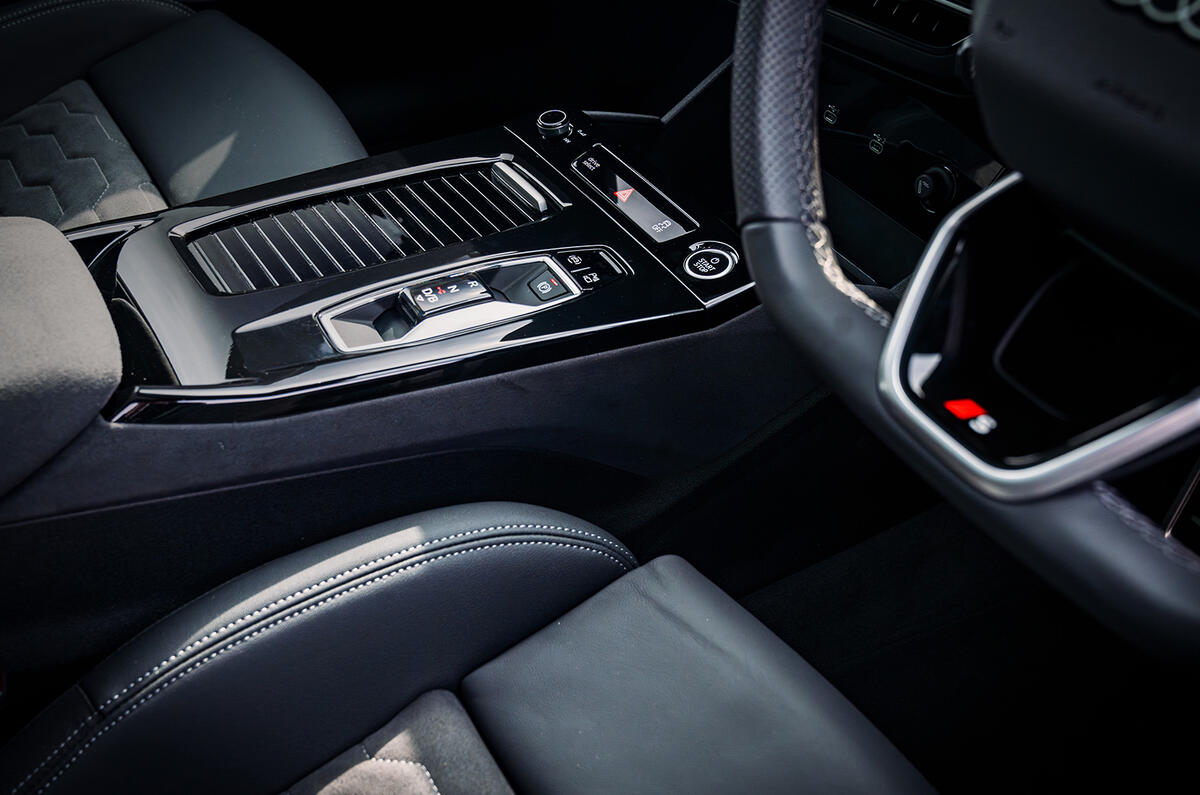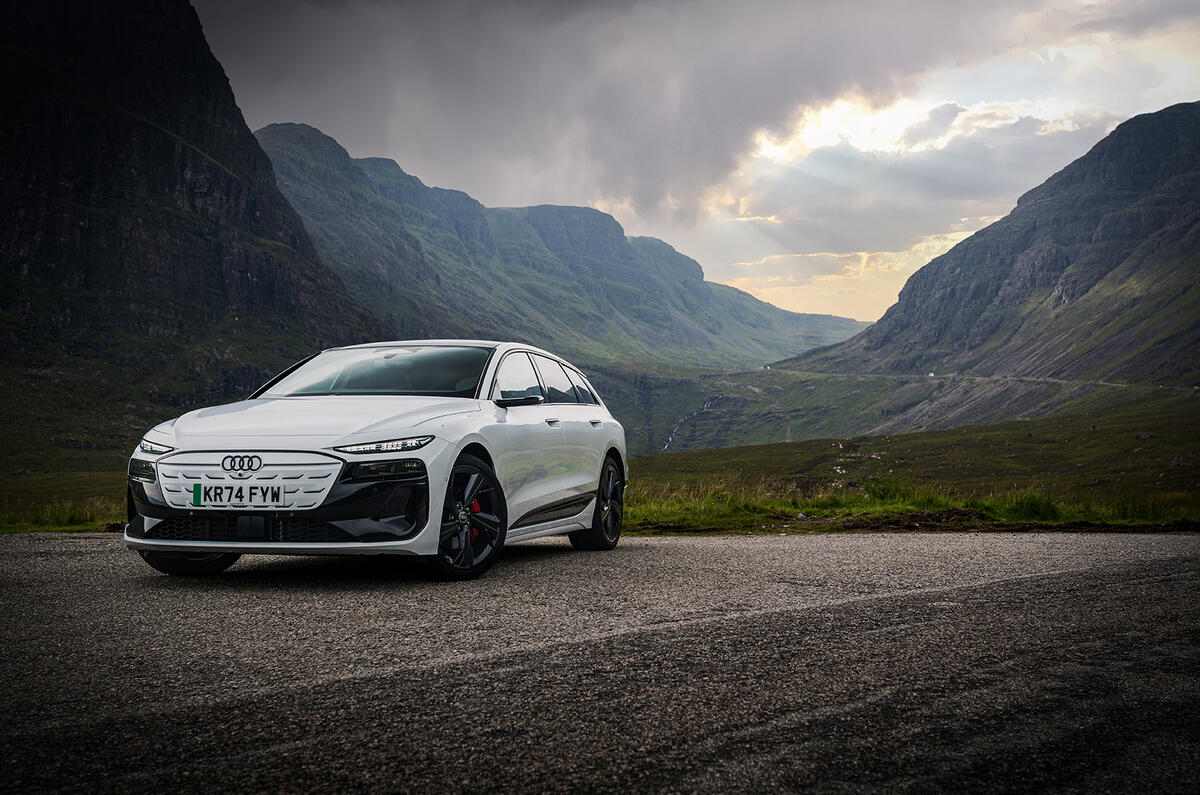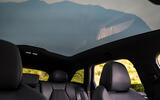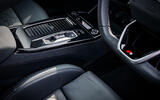Audi has a rich history of crafting some truly exquisite interiors, with the original TT of 1998 serving as a prime example. Its minimalist Bauhaus-inspired design philosophy, sporty driver-focused ergonomics, use of exposed aluminium, and radical circular air vents meant that when it was launched back in 1998, it felt like it had been plucked from the future.
The fourth-generation Audi A8 of 2017 is another key marker. Most notably, it debuted Ingolstadt’s now signature stacked dual-screen MMI touchscreen design and new haptic feedback technology. It also featured a removable, smartphone-sized OLED touchscreen remote control that allowed passengers to customise their seat adjustments, climate control, and infotainment.
And more recently, Audi’s first fully electric car, the 2018 Audi e-tron, catapulted Ingolstadt’s interior design into the electric age by virtue of its Virtual Cockpit, floating centre console, and virtual exterior mirrors – the first ever fitted to a production car. And now, there’s a new one – and it’s arguably Audi’s most advanced, and visually stunning, interior yet.
The Audi A6 e-tron’s interior represents the German marque’s boldest step yet into the future of interior design. Underpinned by Audi’s space-saving Premium Platform Electric (PPE) architecture, the A6 e-tron allowed Ingolstadt's designers to completely rethink interior design from the ground up.
Guided by Audi’s Aesthetic Intelligence design language, the interior of the A6 e-tron blends sleek minimalism, tactile luxury, and cutting-edge technology in a cabin that is both intuitive and emotional. Developed under the vision of lead designer Ramon Bäurle, it’s built around four key pillars: human-centric design, the digital stage, visual clarity, and material-driven craftsmanship. Together, they define what is arguably Audi’s most advanced interior to date. Let’s take a closer look.
Learn more about the Audi A6 e-tron
Human-Centric Design
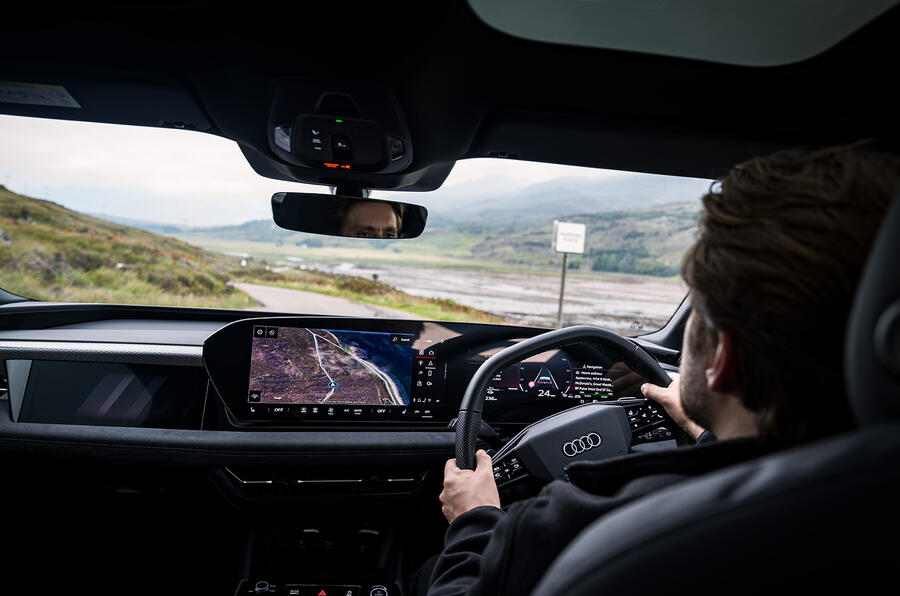
At the heart of the A6 e-tron’s interior is the focus on the people inside it. For starters, its soft-wrap architecture seamlessly unites the dashboard and door panels across the entire width of the car, creating a homogeneous, cocoon-like environment that wraps around everyone inside. The result is a warm, cosetting cabin that feels cohesive and protective, yet spacious and airy.
This harmonious relationship between design and space is most evident in the rear, where the completely flat floor – a key benefit of the PPE platform – delivers generous amounts of head and leg room and even rivals models from the class above.
Also adding to the airy feel is the optional panoramic glass sunroof. At the touch of a button, it can instantly become opaque, providing privacy or reducing glare on sunny days. Flip it back, and the cabin opens to a flood of natural light, enhancing that vast, expansive feeling.
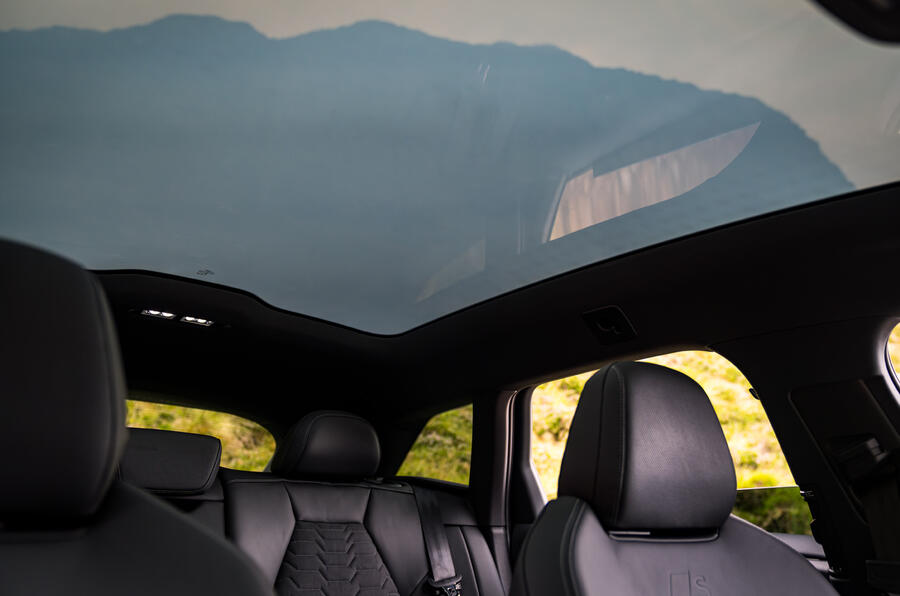
Using polymer-dispersed liquid crystal technology, the sunroof adjusts quickly and evenly across its surface, offering gradual shading instead of the binary open or closed of conventional systems. It allows the driver to fine-tune light levels to suit mood, weather, or time of day.
Ergonomics have been meticulously refined, too. Every button, display, and touchpoint has been positioned for intuitive reach and effortless operation. The two best examples of this are found in the central curved panoramic touchscreen (more on that in a moment) – which is designed to be operated by the driver at just the lift of a finger – and the virtual exterior mirror screens, which have been placed high in the door, making them easier and more natural to glance at.
The Digital Stage

Where Audi’s Vorsprung durch Technik – progress through technology – philosophy truly comes alive is in the digital stage. Here, technology is not just a bolt-on, but a fully integrated part of the interior’s being.
The dashboard is dominated by the enormous, door-to-door MMI display. It consists of three screens: the high-definition 11.9in Virtual Cockpit in front of the driver, the huge 14.5in curved panoramic touchscreen in the middle, and the optional 10.9in front passenger touchscreen. The main screen incorporates haptic feedback, which offers a reassuring tactile click upon operation, making control seamless and intuitive while driving.
Debuted in the A6 e-tron’s stablemate, the Q6 e-tron, the passenger touch screen allows the person riding in the passenger seat to manage entertainment, navigation, and car settings independently of the driver. Active Privacy Mode is key: depending on the current speed and seat occupancy, the light is intelligently directed or diffused, ensuring the passenger can watch movies or play games without distracting the driver.
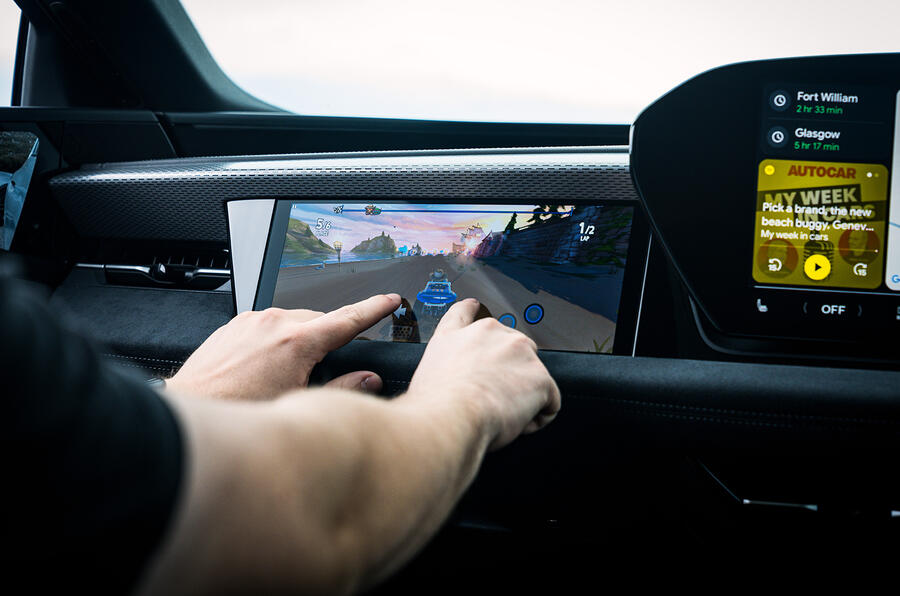
Working closely with the Virtual Cockpit, the optional Augmented Reality Head-up Display reflects a large, tilted image across the windscreen, projecting relevant information, navigation symbols, and assistance alerts directly in the driver’s line of sight.
The dynamic interaction light further enhances the digital experience. Integrated along the dashboard below the windscreen, it pulses, glows, and animates to provide feedback for navigation, energy flow, hazard alerts, and menu interactions.
The entire system is underpinned by Android Automotive OS, integrating the Audi Application Store directly into the MMI. Apps like YouTube are available immediately, eliminating the need to connect a smartphone – although smartphone mirroring does come as standard.
For seamless interaction with the system, the Audi Assistant voice control, powered by the A6 e-tron’s self-learning AI, can help with tasks like navigation, charging queries and weather updates. It can even connect directly to ChatGPT for general knowledge questions, providing a seamless and highly intelligent conversational experience.
Visual Clarity
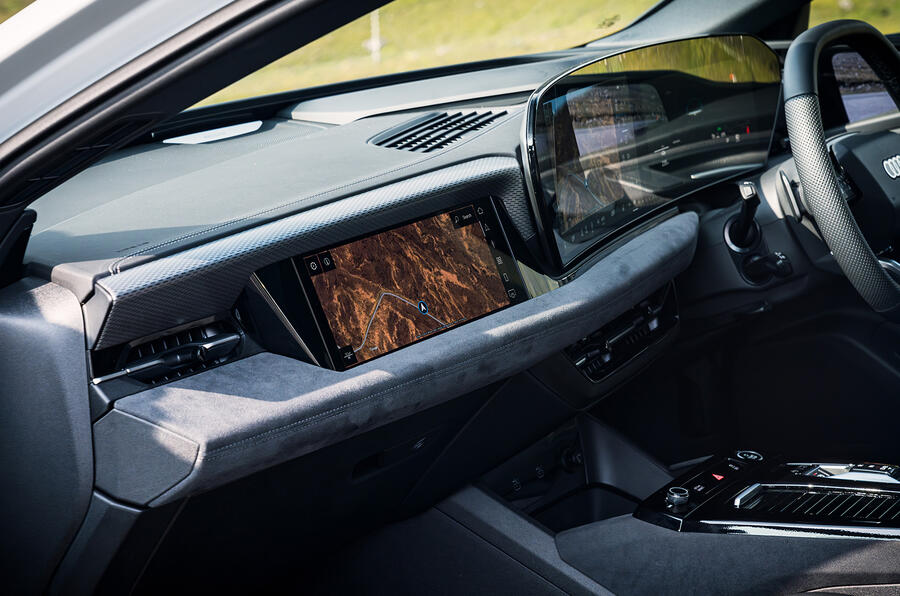
Audi’s third pillar, visual clarity, ensures that the cabin communicates purpose and order through design. Every surface, every control, and every digital element is integrated into a single sculptural composition. The soft-wrap dashboard not only provides comfort but visually unifies the space, hiding technical complexity behind clean lines and subtle transitions. As Ramon Bäurle says: “A good interior is a combination of several key elements that make up a perfectly balanced product – it needs strong technical clarity.
“All the features need to be integrated in a way that’s not distracting, helps the driver and passenger, and has a strong, clear theme. A good interior also gives strong weighting to both the driver and the passenger, because the passenger is an essential person.”
This philosophy extends to functional elements. Displays are angled for optimal sightlines, and the materials themselves differentiate function. Comfort-oriented areas are designed with generous surfaces and soft materials. In contrast, the precisely designed control areas in high-quality, high-gloss black emphasise the clarity of interaction with the vehicle. The slim air vents also seem to disappear into the background, contributing to the ultra-clean aesthetic.
Material-driven Design
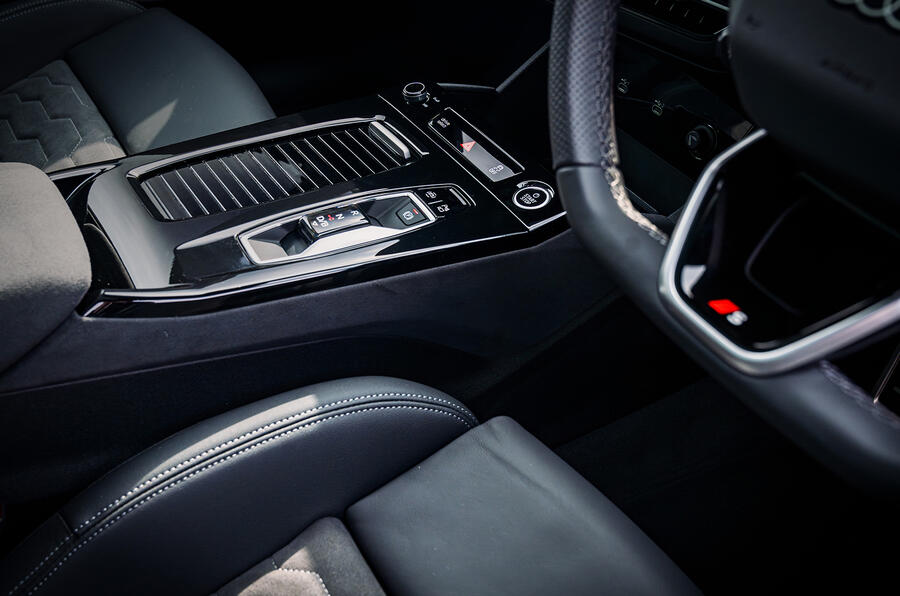
Materiality is not an afterthought in the A6 e-tron; it is a core part of the design story. As Ramon put it: “High-quality materials can make a huge difference in both physical and perceived value, so it’s important that all the touchpoints close to the driver and the passenger are of the highest possible quality.”
Throughout the cabin of the A6 e-tron, three-dimensional patterns catch light dynamically, emphasising texture and craftsmanship. Areas of shadow and depth are intentionally created to showcase materials at their best, while the plush soft-wrap surfaces reinforce comfort and tactile engagement.

The interior also emphasises a sense of premium tactility: switchgear, seating surfaces, and trim are designed to invite touch, giving the cabin a human warmth that complements its technological sophistication. Furthermore, Audi is championing responsible luxury, with certain upholstery and trim options utilising sustainable, recycled materials, without compromising the rich, tactile feel the brand is known for.
Verdict
The Audi A6 e-tron’s interior is a masterclass in combining technology, design, and human-centric philosophy. It demonstrates that a cabin can be minimalist, luxurious, and highly functional all at once. The Aesthetic Intelligence design language ensures that every curve, material, and display contributes to a sense of harmony, while features such as the panoramic curved screen, passenger touchscreen, sunroof and Head-up display create an environment that is as emotionally engaging as it is technologically sophisticated.
